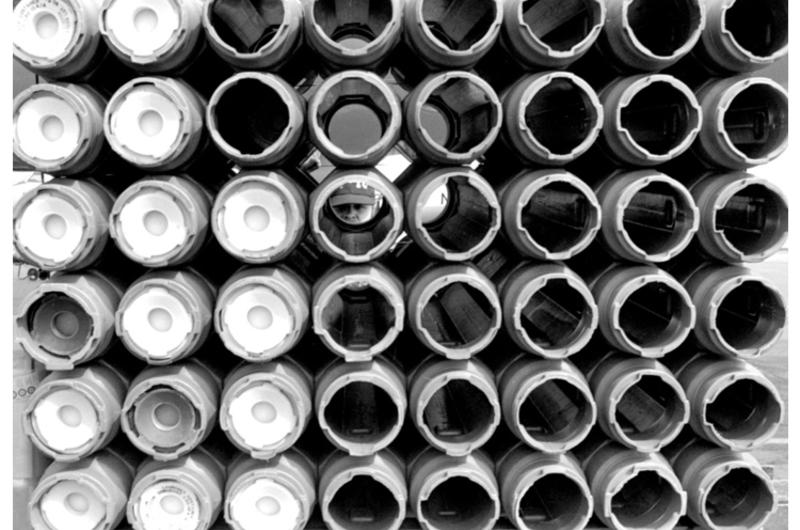

This website was created and maintained from May 2020 to May 2021 to commemorate the 75th anniversary of Stars and Stripes operations in the Pacific.
It will no longer be updated, but we encourage you to explore the site and view content we felt best illustrated Stars and Stripes' continued support of the Pacific theater since 1945.
It's more than just flying for submarine patrol crews

A member of the crew at Misawa Air Base peers through an empty container that held a sonobuoy before it was loaded onto a P3C Orion.
By Bob Wickley | STARS AND STRIPES May 5, 1977
MISAWA AB, Japan — Yesterday, airborne submarine hunters flew low over blue-green battlefields searching for the tiny, telltale wake of periscopes.
Today, electronic eyes and ears penetrate the depths to pinpoint hidden submarines. Acoustic and non-acoustic equipment are the main detection gear of antisubmarine warfare.
Today's mission, like many since Patrol Squadron 40 (VP-40) arrived here in early February, will begin at 3 a.m. and will probably end 18 hours later.
First, there's a preflight briefing, then a three-hour preflight check of the P3C Orion sub-hunting plane and its sophisticated electronic equipment.
The weather is much colder here and there's more snow than the men of VP-40 contend with at their home station, Moffett Field NAS near San Francisco.
The most intriguing part of the VP-40 mission is detecting, tracking and pinpointing submarines. It's important to know the adversary's operational environment and movements.
Besides tracking submarines, VP-40 also tracks and photographs other ships — combat vessels and merchantmen.
The Orion can carry a large number and variety of weapons; however, they are only carried during war. Search equipment is carried on all flights.
A typical P3C crew includes three pilots, a tactical coordinator, a navigator, flight engineer and several technicians.
The Lockheed Orion is said to be the world's most sophisticated antisubmarine warfare system, equipped with modern computers and acoustic monitoring devices called sonobuoys. It is a very effective aircraft for its designed mission, according to the crewmen.
The P3C aircraft often works in conjunction with other American and allied surface and subsurface units during coordinated exercises. "These exercises allow us to develop the necessary tactics to be used at a later time," stated Lt. (j.g.) Dan Clayton, a VP-40 navigator.
VP-40 keeps two aircraft on a ready alert status at all times, one of them on a one-hour response for operational missions and emergency medical evacuations. The squadron can also help ships in distress.


